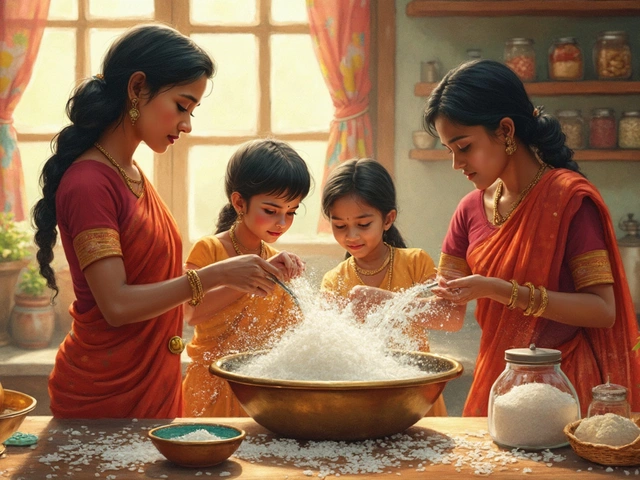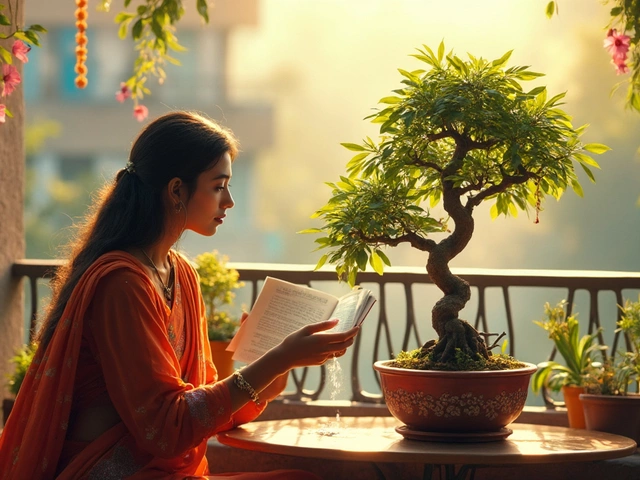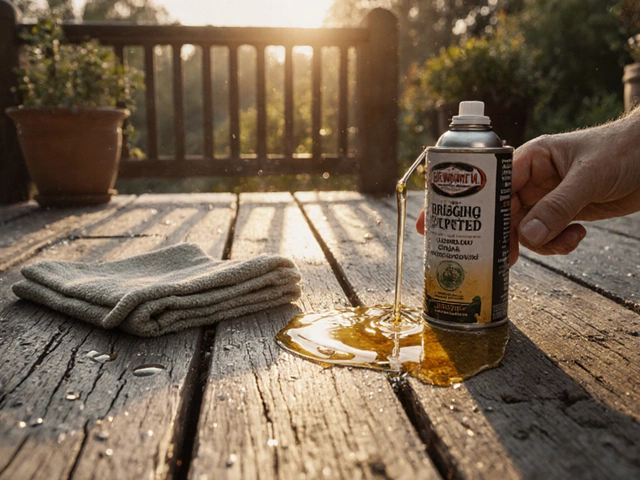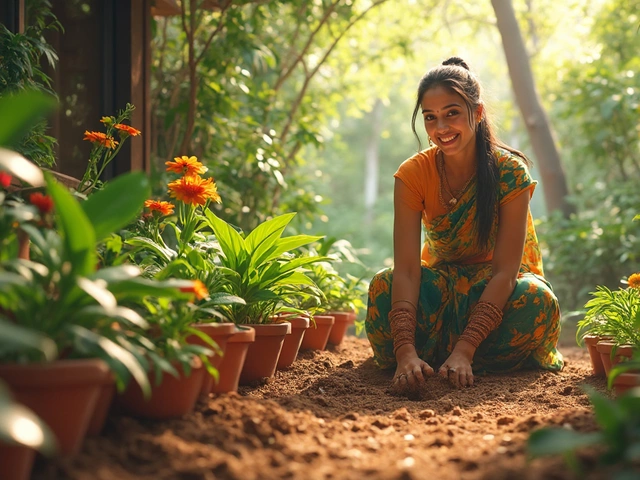Picture hillsides streaked with marigold gold and bold gulmohar reds. The scent of jasmine breezing through city streets. If you’ve ever wondered why some Indian gardens go bonkers with blossoms during certain months while others seem to slumber, you’ve tapped into a delightful bit of nature’s calendar. India’s climate has a split personality—it’s wild and unpredictable in some places, strictly scheduled in others. That mix means there’s no single answer to “Which month do flowers bloom in India?”—it’s a tapestry woven out of crazy weather, regional quirks, and even tree politics. This isn’t just trivia either; timing your garden to bloom just right can bring your yard to life or let you chase down pop-up flower shows in the right region at the perfect moment.
Climate and Regional Variations: Why Flowering Months Vary Across India
Think India and you’ll picture everything from snowy mountain chill in the north to muggy, monsoon-hammered coasts in the south and sticky heat in the east. India has six major seasons, or ‘Ritus’: Vasant (spring), Grishma (summer), Varsha (monsoon), Sharad (autumn), Hemant (pre-winter), and Shishir (winter). This intricate rotation happens on a rather massive stage—from the Himalayan heights to coastal flats—meaning Kolkata’s marigolds party at different times than Delhi’s roses or Kerala’s bougainvillea. In the north, chilling winters halt most flower action till late February or March. The south, by contrast, stays warm and supports year-round bloomers, with dramatic peaks during the monsoon months and in winter when nights are cooler but days still mild.
Let’s throw a few figures into the mix. The Indian Meteorological Department pegs spring as stretching roughly from mid-February to April, summer from May to June, the monsoon from June to September, and autumn until November. In the temperate northern states—think Delhi, Punjab, Uttar Pradesh and the hill-states—spring blooms usually explode from late February, peak in March and April, and tail off in May as temperatures ramp up. In the hot, humid lowlands and the southern peninsula, flowering cycles seem almost flipped; the onset of the monsoon can trigger massive blooming, especially in the Western Ghats, with places like Munnar turning violet-purple from wild neelakurinji blooms once every twelve years.
Western India, especially Rajasthan and Gujarat, holds back until early summer—May and June smash in with desert marigolds, bougainvillea, and wild cacti in bloom before wilting under dry, harsh heat. Meanwhile, the eastern states enjoy bursts of color courtesy of pre-monsoon showers around April to July, and another round again after the monsoon lifts its veil in September and October.
One thing’s certain: India’s flowering calendar is anything but dull. Even in urban pockets, microclimates create surprises. A Mumbai balcony can flower year-round, while an outdoor patch in Shimla will sit lifeless till spring thaws the frost. Hill stations and high-altitude valleys? These go for short, fierce flower seasons, often peaking in the rainy months when moisture and sunlight combine to ignite fields of poppies, irises, and wild Himalayan orchids. The table below lines up typical blooming peaks for a few well-loved Indian regions so you can see just how much a postcode matters.
| Region | Key Flowering Months | Popular Flower Species |
|---|---|---|
| North India (Plains) | February - April | Roses, Marigolds, Petunias, Dahlia |
| South India | June - September, January - March | Bougainvillea, Hibiscus, Jasmine |
| Himalayan Hills | July - September | Rhododendrons, Orchids, Primulas |
| Western India | May - June, Post-monsoon | Desert Marigold, Bougainvillea, Cactus flowers |
| Eastern India | April - July, September - October | Tuberose, Chrysanthemum, Lotus |
Most Popular Flowers and Their Bloom Times in India
If you ask a gardener in India about their favorite flowers, chances are the list will run long and nostalgic. Every region has its beloved bloom, usually tied to culture, cuisine, or even local legends. But amidst all that diversity, a few stars steal the show every year and show up just about everywhere, ready to color up gardens, flower markets, city parks and even temple doorways.
The mighty marigold probably has the most ‘air miles’—this orange and gold flash fills garlands for just about every festival, from Diwali in the north to Onam in deep south Kerala. In North India, marigolds begin their marathon show in late winter (February through April) and occasionally put in a second round when the rains arrive around August. The rose, India’s reigning symbol for romance and resistance to heat, blooms mainly from February onwards up north and pretty much all year in cooler southern zones. Hibiscus is another garden workhorse, known for its huge, showy blossoms and its role in pujas (prayer rituals). You’ll find it firing away year-round in India’s sultry coastal zones, with an extra pep in step during early winter.
India is crazy for seasonal flowers too—petunias, pansies, dahlias and snapdragons flood nurseries as soon as winter winds fade. Spring (February to April) brings the big reveal for nearly every annual flower you can name. Chrysanthemums are the champs of the post-monsoon months and early winter, dotting regions with color as the days shorten. The water-loving lotus graces lakes and rivers in the steamy east from July through September when everything is lush and overflowing.
Some flowering times are adorable in their unpredictability. Take the neelakurinji, a tiny, blue-violet flower that blanketed Munnar’s hillsides in 2018 after twelve years of hiding. Then there’s the delicate night-blooming jasmine (parijat), which perfumes nighttime air across north and eastern India from late summer into early autumn.
Below you’ll find a breakdown of popular Indian flowers and their bloom times. Handy for gardeners, festival planners, and anyone hankering for the next Instagram-perfect backdrop:
| Flower Name | Main Bloom Months | Best Regions |
|---|---|---|
| Marigold | February - April, August - October | All over India |
| Rose | February - April (North), Year-round (South) | Plains and plateau regions |
| Hibiscus | Year-round | Coastal South, Northeast |
| Chrysanthemum | October - December | North and Central India |
| Lotus | July - September | Eastern & Central India |
| Neelakurinji | August - October (Once in 12 yrs) | Western Ghats |

How to Plan a Year-Round Flower Garden in India
When your neighbors peek over the fence in envy, you know you’ve timed your garden just right. But putting on a nonstop flower show in an Indian yard or even a balcony isn’t just a matter of luck. Flower gardening here means thinking ahead—choosing the right mix, timing the sowing, and keeping a sharp eye on your local weather’s little quirks. Here’s how you can sync your flower garden with India’s wild calendar for non-stop blooming.
Start by breaking the gardening year into blocks: pre-winter (October-December), winter and spring (January-April), summer (May-June), and monsoon (July-September). Each slot lets certain flower families shine. For example, sow marigold seeds in late autumn—by February and March, your beds will be blazing with gold. Petunias, phlox, and pansies thrive in the winter months across northern India. Meanwhile, hardy zinnias and portulacas tough it out during scorching summer, while begonias and rain lilies leap into life as soon as monsoon clouds roll in. In southern India, you can mostly dodge the wintery stuff and ride cycles of monsoon and dry-season bloomers.
Here’s a checklist to help stretch your blooming window:
- Mix annuals and perennials: Annuals like marigold, petunia, cosmos, and zinnia give short, intense bursts. Perennials (hibiscus, bougainvillea, jasmine) anchor the landscape all year.
- Stagger sowing times: If you plant every two weeks during spring or monsoon, you’ll always have fresh flowers in the queue.
- Match plants to your microclimate: Check for shade, sun, wind, or rainfall pockets. Some flowers, like impatiens, only need dappled light, while sun-lovers like sunflowers demand all-day exposure.
- Feed, prune, and deadhead: Regular pruning and pulling off old blooms encourages new growth—don’t be lazy about it!
- Watch for seasonal bugs: Mid-spring and monsoon bring firepower from pests. Neem spray or good old hand-picking works wonders for most flowers.
Serious about extending that blooming magic? Sheltered planters and balcony pots mean you can cheat the weather, even up north—shifting tender species inside when the mercury crashes. Mulch your soil in March and October to lock in moisture and keep roots cool. Use a slow-release organic fertilizer—vermicompost is your buddy here—every four weeks for a steady stream of nutrients.
If you want your garden to strut its stuff for festivals or special occasions, set a calendar reminder. Diwali demands marigolds in early November, Holi craves spring blossoms, while the south’s Pongal goes wild with jasmines and color sprays in January. Tracking these flower cycles isn’t just about looks; it can save you cash too. Seasonal flowers are cheaper and hardier when they bloom on cue versus out-of-season imports.
India’s Flower Festivals and Cultural Blooming Hotspots
It’s hard to separate flowers from Indian festivals and rituals—floral carpets for Onam, rose garlands for weddings, or the riot of chrysanthemum at autumn shows. Cities compete for the flashiest displays, and certain states have carved out signature events around their floricultural bounty. Watching regional bloom cycles up close can give you an insider’s edge, whether you’re chasing wild rhododendron in the hills or jasmine-scented ceremonies in Tamil Nadu.
Delhi welcomes the world-class Mughal Garden’s open days in February and March—roses, tulips, pansies and phlox all vying for space in geometric beds. Bangalore’s Lalbagh Flower Show transforms the botanical garden twice a year, with August (monsoon) and January (harvest) as main events. Ooty and Munnar in the hills get wild with rhododendron and rare orchids in July and August, when clouds dip low and rains green up the valleys. Kerala’s Thrissur Pooram festival in May is all about massive flower garlands (and elephants); while the Kanchipuram temple towns hit peak jasmine in the muggy days just before the monsoon.
Eastern India isn’t left behind: Kolkata’s flower markets pack marigold, tuberose, and roses into dense heaps all year, but the real color riot arrives just after Durga Puja, as flowers flow nearly nonstop from the Ganges’ fields. Northern states, especially Punjab and Haryana, go crazy with fields of sunflowers and cosmos once the winter chill fades and before summer ratchets up. Did you catch the tiny wild poppies blooming beside the Ganges in Uttarakhand in April? Or the once-in-12-years blue mist of the neelakurinji in Munnar? They’re worth planning for, with travel calendars built around local flower surges.
Here’s a quick shout-out to India’s iconic flower festivals:
- Mughal Garden Opening, Delhi (Feb-March): Over 100 types of tulips, roses, and annuals.
- Lalbagh Flower Show, Bangalore (Jan & Aug): Gigantic floral installations and rare tropical species.
- Valley of Flowers, Uttarakhand (July-Sept): Home to 500+ flowers bloom India species, from Himalayan poppies to primulas.
- Thrissur Pooram, Kerala (May): Spectacular marigold and jasmine garlands.
- Chrysanthemum Festival, Chandigarh (Nov-Dec): The city’s gardens burst with layered, dahlia-like blooms.
So which month really wins the ‘bloom race’ in India? There’s no single crown. You’ll find pockets of peak color in February-April (springtime) and right after the first summer monsoon rains—June to September—depending on where you stand. Armed with this timing, a little regional know-how, and a willingness to try stuff out, you can enjoy a garden or a city park loaded with color almost any month of the year. Just be ready for a little weather drama, and maybe keep your phone charged for that next flower selfie—nature rarely sticks to a neat script in India.





